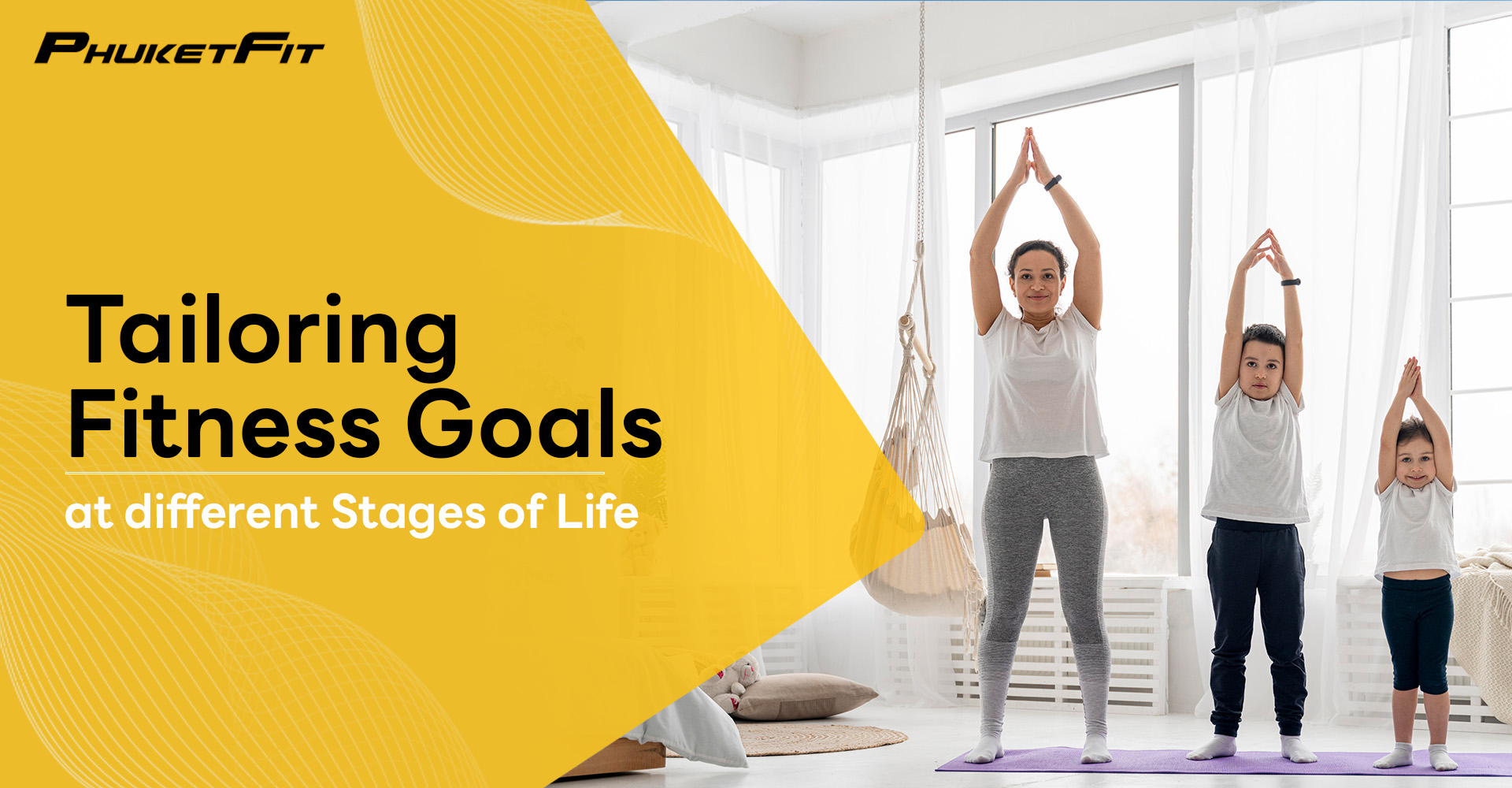
Tailoring Fitness Goals at different Stages of Life
In this article, we explore how to tailor your fitness goals throughout different stages of life, emphasizing the importance of fitness at any age for a healthy, improved living. Fitness, crucial from our younger years to later in life, impacts every aspect of our well-being. It’s essential to adjust our fitness strategies as we navigate through life’s various stages. This process begins with setting realistic fitness goals, which are key at any stage of life. These goals should reflect your current abilities and encourage progress. A fitness professional can offer valuable insights and help you set SMART (Specific, Measurable, Achievable, Relevant, Time-bound) goals for clear motivation (https://www.heart.org/en/healthy-living/fitness/staying-motivated/set-your-fitness-goals).
Importance of Fitness
Fitness is important at any age because it supports a healthy life and improved living. It enables us to live actively and happily, reduces injury risks by strengthening bones and muscles, and supports heart health. As life changes, it’s essential to adjust our fitness goals to remain achievable and improve our well-being
Impact on Overall Health and Well-being
Regular exercise significantly benefits our overall health, improving heart health, maintaining muscles, increasing flexibility, and reducing chronic disease risks, such as diabetes and heart disease, and improving sleep. It’s also crucial for older adults in keeping bones strong, reducing fall and bone disease risks. Additionally, fitness activities can build community, offering social support and contributing to mental health. Setting realistic fitness goals with the assistance of fitness professionals helps integrate physical activity into daily life, suitable for each person’s fitness level and life stage.
Setting Realistic Fitness Goals
A balanced approach to fitness involves aligning ambitions with practicality, such as gradual weight loss over months, and starting with low-impact exercises to avoid injury and burnout. It’s crucial to assess your physical condition, understanding your fitness level through factors like age, weight, and strength (https://fabulousbody.com/weight-training-volume-many-reps-per-muscle-group-per-week/). This understanding helps tailor a workout routine that fits your life stage, goals, and personal interests, keeping you engaged and motivated. Incorporating a mix of cardiovascular, strength, and flexibility exercises into your routine ensures a comprehensive approach to fitness. Activities such as yoga, pilates, and tai chi can significantly improve flexibility and mobility, essential for all ages but particularly beneficial as we age (https://edition.cnn.com/2022/10/28/health/yoga-pilates-tai-chi-qigong-wellness/index.html).
Understanding Your Current Fitness Level
Effectively customizing your fitness plan requires knowing your current fitness level. Consider factors like age, weight, cardiovascular endurance, strength, flexibility, and any existing health conditions. Self-assessment tools and fitness tests can offer a baseline, but consulting a fitness trainer provides a professional evaluation. Knowing your starting point helps avoid overly ambitious goals that could lead to injury or disappointment. For example, beginners might initially focus on aerobic exercises and bodyweight movements, avoiding intense weightlifting until they’ve built up baseline strength..
Choosing the Right Workout Routine
Selecting the right workout routine is essential. Your routine should fit your life stage, fitness goals, and personal interests to keep you engaged and motivated. Enjoying your workouts transforms them from chores into highlights of your day. Start by defining your goals, whether it’s to improve cardiovascular health, increase muscle mass, or enhance flexibility.
Assessing Your Fitness Needs and Preferences
Before starting any fitness routine, evaluate your physical needs and personal preferences. Identify areas needing work, like cardiovascular health or flexibility. Consider your lifestyle; whether you’re mostly sedentary or always on the move, it helps to know what your body misses in its daily routine.
Tailoring Workouts to Your Fitness Level
After identifying your fitness goals and what you like, adjust your workouts to fit how fit you are right now. If you’re just starting, go easy to avoid getting hurt and to make a good habit. Improvements should be slow. Change up your workout as you get better to keep things interesting and avoid getting stuck. Checking in on your progress regularly helps keep your workout right for your fitness level. Mix cardio, strength, and flexibility exercises for a complete workout.
Cardiovascular Exercises for Heart Health
Cardio exercises make your heart strong and improve how well you use oxygen. These exercises get your heart rate up and help you breathe better. Doing cardio can help you lose weight, lower blood pressure, and cut down the risk of heart disease.
Flexibility and Mobility Exercises
Flexibility and mobility work is key for a full fitness routine. They help you move better, lower the chance of getting hurt, and improve your posture. Flexibility is about stretching your muscles, and mobility is about moving your joints freely. Adding stretching, yoga, or pilates can ease muscle tightness and soreness, which is especially good if you sit a lot or after a hard workout. Mobility exercises are active and help with everyday movements and getting ready for more exercise.
Incorporating Fitness into Different Stages of Life
Incorporating a fitness routine into your lifestyle is crucial, regardless of your stage of life. Fitness not only enhances physical well-being but also boosts mental health and improves daily functioning. Different life stages, however, require tailored approaches to physical activity, considering the individual’s current fitness level.
Fitness and Aging
Fitness should be part of your life, no matter your age. It makes you physically and mentally better and helps with daily tasks. Each stage of life needs a different approach to exercise, based on your fitness level and health goals. For older adults, staying active is key. Physical activity keeps muscles strong, hearts healthy, and makes you more flexible, adding to your independence and life quality. Gentle exercises, like walking or swimming, and light strength training can help, along with flexibility exercises. Children and teens need daily exercise too, for growth, mental health, and social skills. Encourage a mix of play and organized activities. Running, sports, and simple exercises build heart health, coordination, and strength. Keeping active, regardless of age, lays a strong foundation for a lifelong commitment to health.
